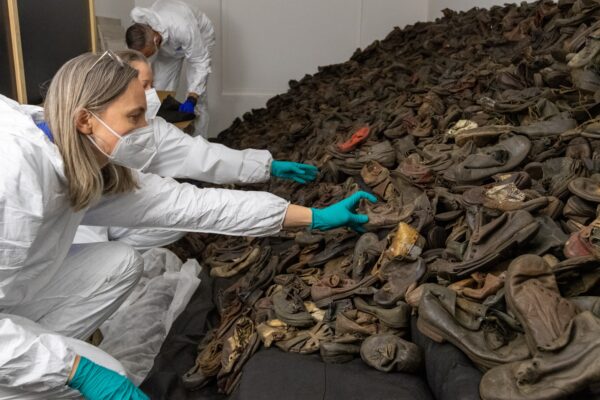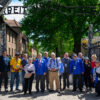A team of archaeologists and mapmakers say they have uncovered a forgotten tunnel that 80 Jews dug largely by hand as they tried to escape from a Nazi extermination site in Lithuania about 70 years ago.
The Lithuanian site, Ponar, holds mass burial pits and graves where up to 100,000 people were killed and their bodies dumped or burned during the Holocaust.
Using radar and radio waves to scan beneath the ground, the researchers found the tunnel, a 100-foot passageway between five and nine feet below the surface, the team announced on Wednesday.
A previous attempt made by a different team in 2004 to find the underground structure had only located its mouth, which was subsequently left unmarked. The new finding traces the tunnel from entrance to exit and provides evidence to support survivor accounts of the harrowing effort to escape the holding pit.
“What we were able to do was not only solve one of the greatest mysteries and escape stories of the Holocaust,” said Richard Freund, an archaeologist from the University of Hartford in Connecticut and one of the team leaders. “We were also able to unravel one of the biggest problems they have with a site like this: How many burial pits are there?”
Dr. Freund and his colleagues, working with the PBS science series NOVA for a documentary that will be broadcast next year, also uncovered another burial pit containing the ashes of perhaps 7,000 people. That would be the 12th burial pit identified in Ponar; officially known today as Paneriai.
From 1941 until 1944, tens of thousands of Jews from the nearby city of Vilnius, known as the Jerusalem of Lithuania, were brought to Ponar and shot at close range. Their bodies were dumped into the pits and buried.
“I call Ponar ground zero for the Holocaust,” Dr. Freund said. “For the first time we have systematic murder being done by the Nazis and their assistants.” According to Dr. Freund, the events at the site took place about six months before the Nazis started using gas chambers elsewhere for their extermination plans.
An estimated 100,000 people, including 70,000 Jews, died at Ponar. Over four years, about 150 Lithuanian collaborators killed the prisoners — usually in groups of about 10. In 1943 when it became clear the Soviets were going to take over Lithuania, the Nazis began to cover up the evidence of the mass killings. They forced a group of 80 Jews to exhume the bodies, burn them and bury the ashes. At the time they were called the Leichenkommando, or “corpse unit,” but in the years that followed they were known as the Burning Brigade.
For months, the Jewish prisoners dug up and burned bodies. One account tells of a man who identified his wife and two sisters among the corpses. The group knew that once their job was finished, they, too, would be executed, so they developed an escape plan.
Originally published HERE








